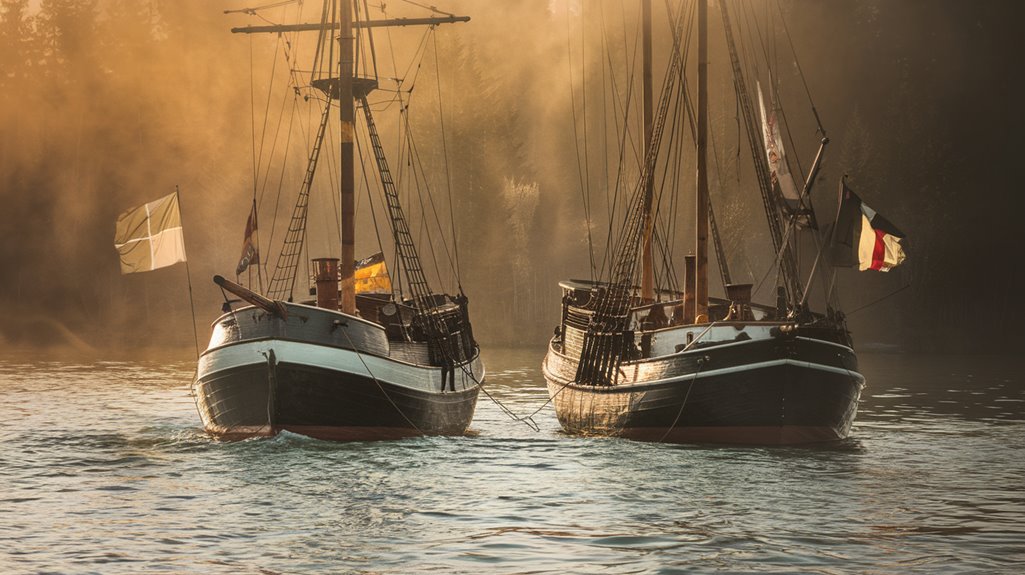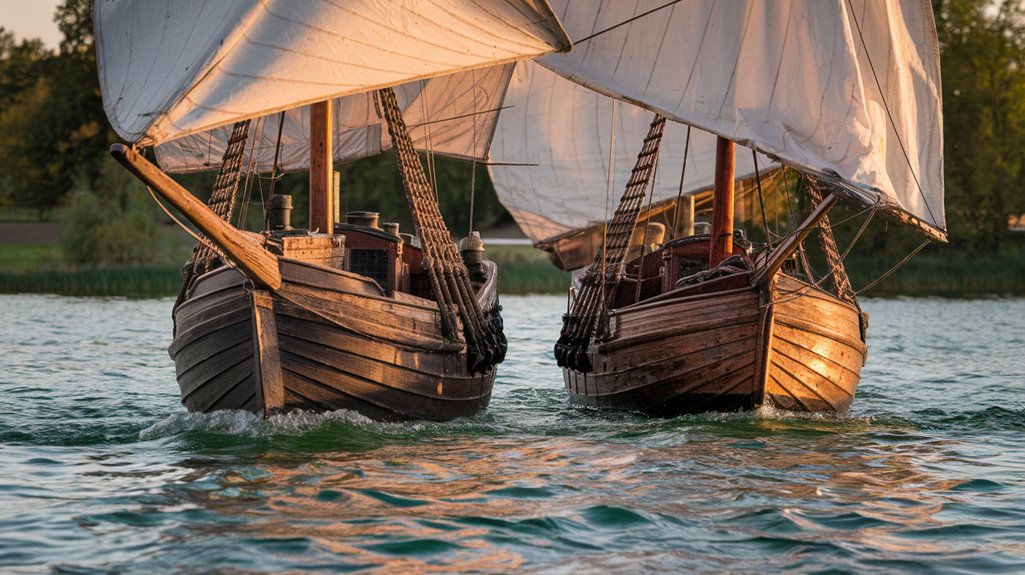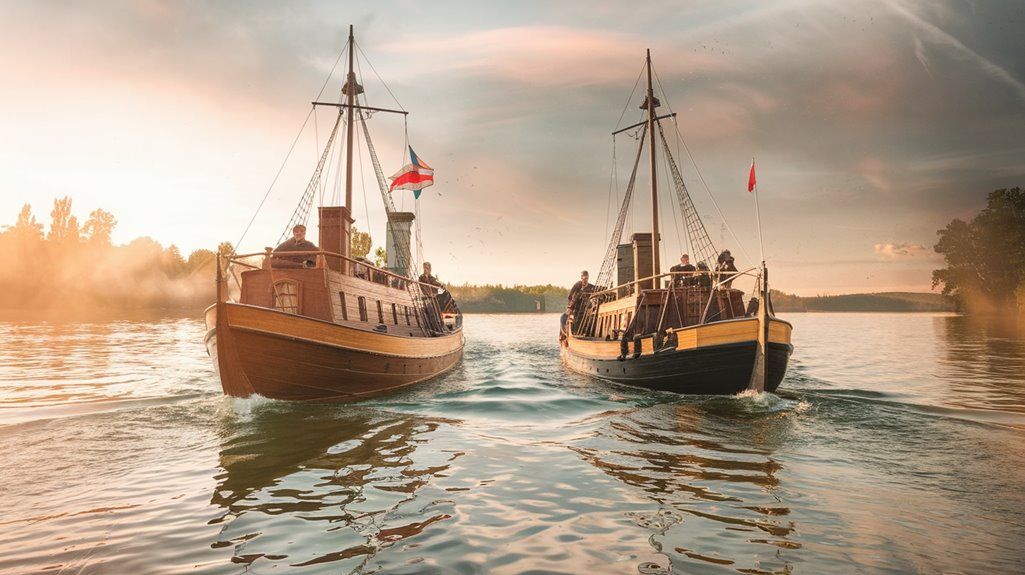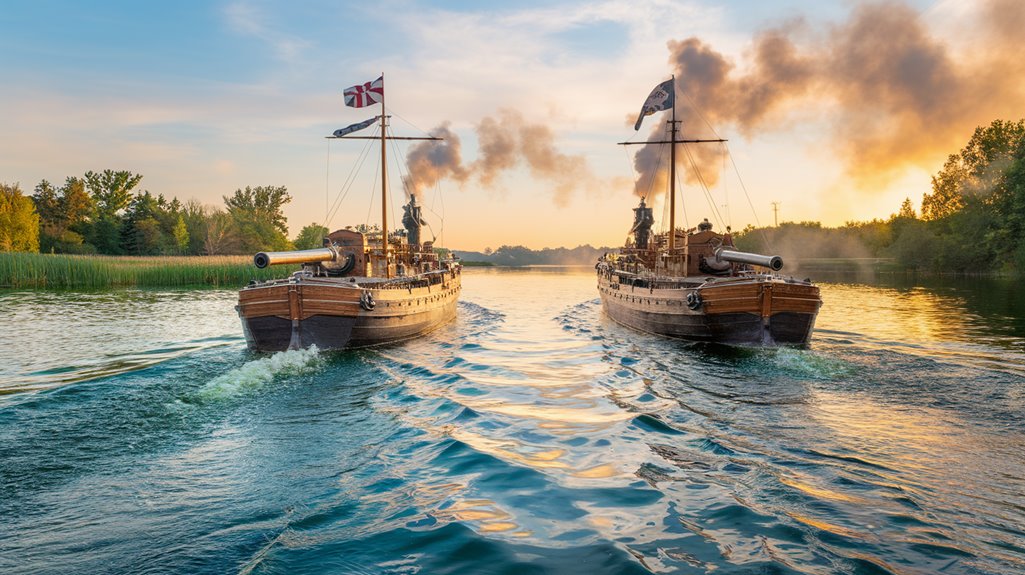The Smallest Naval Battle: One Lake, Two Countries, Big Drama
Like a pot of water simmering before it boils, Lake Malawi's peaceful surface masked the growing tensions beneath. You'd never guess that this vast freshwater expanse would become the stage for what many call the smallest naval battle in modern history. When Malawi's oil exploration stirred Tanzania's territorial claims in 2011, the brewing conflict finally bubbled over. What followed wasn't just a dispute over borders—it was a showdown that would reshape the destiny of millions who call these waters home.
The Path to Confrontation

While the colonial powers of Europe carved up Africa in the 19th century, they created artificial borders that would later spark numerous conflicts, including disputes over the African Great Lakes.
You'll find this colonial legacy particularly evident in the tension between Malawi and Tanzania over Lake Malawi. The dispute simmered for decades until 2011, when Malawi's decision to award oil exploration licenses ignited a fierce standoff.
These resource disputes affect more than 2 million people who depend on the lake for survival, with fishing communities caught in the crossfire. The struggles intensified when Ugandan military patrols began targeting and arresting fishermen from neighboring countries. The competition for control over revenue-generating resources has consistently fueled regional insecurity and illegal smuggling networks.
Tanzania's demand to halt oil exploration in 2012 marked a critical escalation in the conflict. The heart of the disagreement lies in colonial divisions that left unclear interpretations of where exactly the border runs along the lake's eastern shore.
Battleground: A Lake Divided
Since the 1890 Anglo-German Treaty, Lake Malawi's eastern shoreline has remained a focal point of territorial dispute between Malawi and Tanzania.
You'll find Malawi asserting complete sovereignty over the eastern half, citing the treaty's specific provisions, while Tanzania argues for a median-line boundary division.
The conflict over lake resources stems directly from colonial legacies, where European powers drew boundaries without consulting local populations. Thorough research into this dispute requires adapting to changes as new diplomatic developments unfold.
Today, you can see how this historical oversight has sparked renewed tensions, especially with the discovery of valuable hydrocarbon deposits.
Former leaders from Botswana and Mozambique were appointed to mediate the complex situation, demonstrating regional commitment to peaceful resolution.
Tanzania's recent $31.8 million port construction project has only intensified the dispute, leading both nations to examine ICJ arbitration.
With economic interests at stake and diplomatic efforts yielding little progress, you're witnessing a complex territorial clash shaped by both historical treaties and modern resource demands.
Forces and Firepower
Throughout history, naval battles have demonstrated that superior numbers don't always guarantee victory. You'll find this especially true in freshwater conflicts, where tactical innovations often matter more than fleet size.
Take the War of 1812's Lake Ontario campaign, where the British Navy launched the HMS St. Lawrence, a massive 112-gun ship that faced unique logistical challenges in freshwater combat. The Ming's eleven battle squadrons proved highly effective in the shallow waters of Lake Poyang. The recent tensions at Pangong Tso Lake between India and China demonstrate how even modern freshwater disputes require careful military positioning.
Similarly, the Ming fleet's clever use of fireships against the Han's larger vessels proved that strategic thinking could overcome numerical disadvantages.
Even in World War I, the U.S. Navy showed that adaptability was essential, deploying railway guns and establishing bases quickly.
Today's naval commanders still grapple with these same principles, whether they're managing small patrol boats or coordinating complex operations across divided lakes.
The Clash Unfolds
After months of German naval dominance on Lake Tanganyika, the British launched their counter-offensive in December 1915 with two small motorboats, HMS Mimi and Toutou. Their naval strategy focused on using surprise attacks against the larger German vessels, starting with the capture of Kingani on December 26. The British quickly renamed their prize HMS Fifi and put it to use. The Graf von Götzen's impressive 800-soldier capacity made it a formidable opponent on the lake.
You'll find the most dramatic action came in February 1916, when HMS Mimi, HMS Fifi, and an armed barge teamed up to sink the Hedwig von Wissmann. The success of these operations earned expedition leader Spicer-Simson the Distinguished Service Order.
While the Graf von Götzen still posed a significant threat, these victories marked a turning point in the lake's control. The Germans couldn't maintain their previous level of dominance, and their naval presence gradually diminished as land battles shifted the war's momentum.
Legacy and Lessons Learned

The Battle for Lake Tanganyika left an enduring mark on military strategy and naval warfare. You'll find that this unique conflict demonstrated how naval strategy could decisively influence inland operations, as controlling the lake proved essential for dominating East Africa during WWI.
What's particularly fascinating is how the Allies overcame their initial disadvantages through logistical innovation. They transported small boats like HMS Mimi and Toutou across difficult terrain, converted civilian vessels into warships, and effectively countered German technological superiority.
These adaptations proved that resourcefulness could trump raw power. Beyond its immediate impact, the battle showed that even seemingly minor waterways could shape larger conflicts. Similar resourcefulness was demonstrated by the Czechoslovak Legion when they captured enemy steamships on Lake Baikal to ensure their safe passage.
The campaign's success helped weaken German control in East Africa and highlighted how naval warfare wasn't limited to ocean battles.










